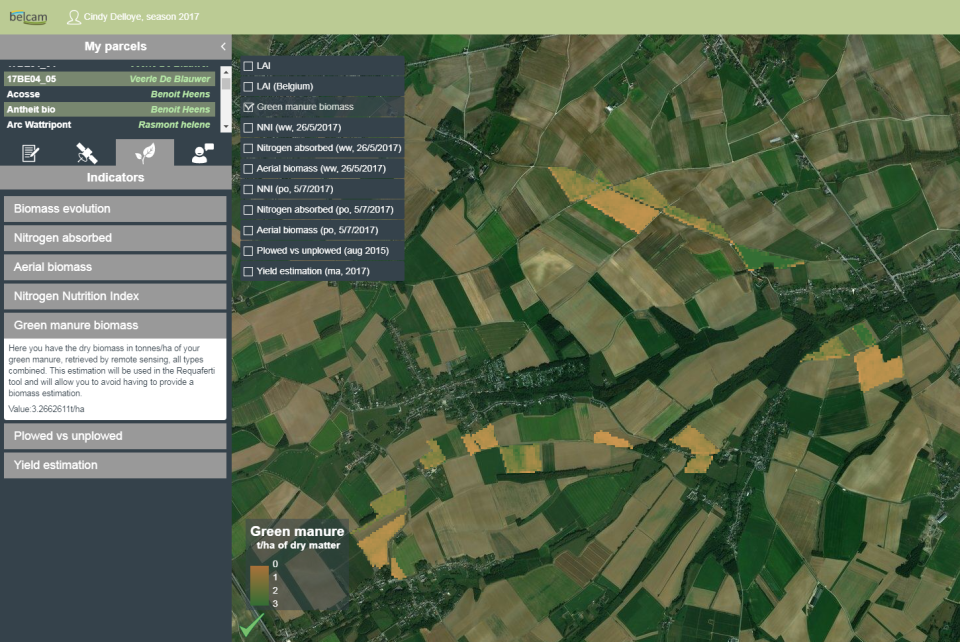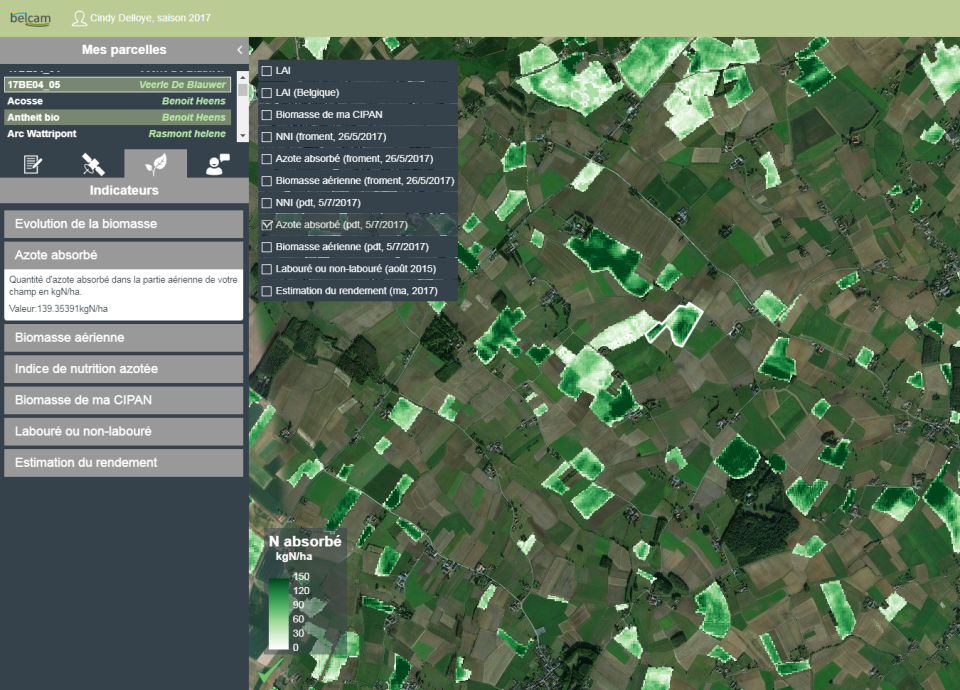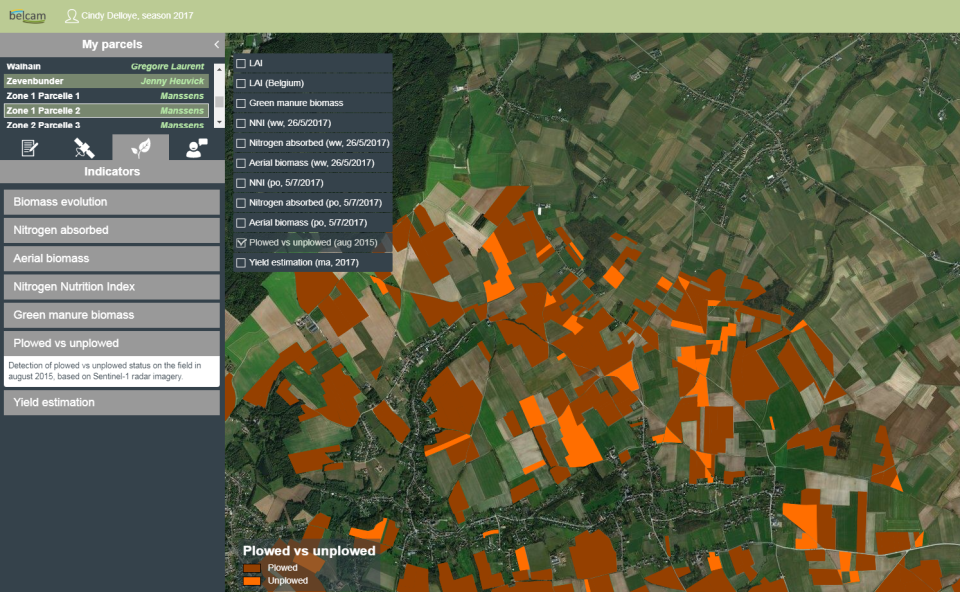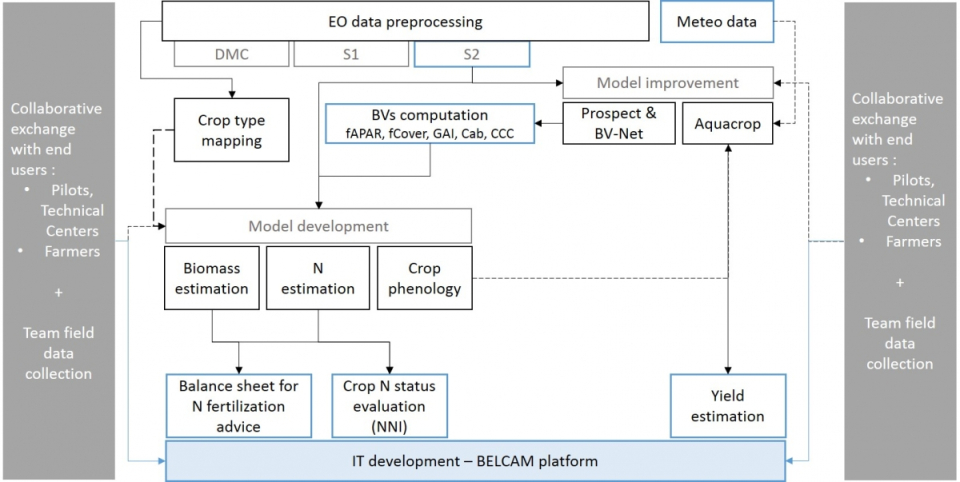Context and objectives
The management strategies of agroecosystems have evolved during the last 50 years consisting of intensifying the use of agrochemicals and agricultural machinery, expanding irrigated areas, and incorporating new crop varieties. The agricultural production increase was obtained at the cost of excessive use of input which plays a significant role in the degradation of the soil fertility, the water quality, the biodiversity habitat and of the environment in general including greenhouse gas emissions. The agricultural sector is quite aware about the challenge of securing farmer income while reducing these negative externalities.
The digital evolution of the crop management based on the recently launched Copernicus Sentinel missions is one of the promising factor for the crop management optimization, for instance for nitrogen fertilizer application thanks to a N balance at field scale defining more precisely crop needs for some major crops (winter wheat, maize and potato).
The advent of a new generation of high spatial and temporal resolution satellite sensors (i.e. Sentinel-1, Sentinel-2) opens the doors to develop new prototype applications much more connected to the so called end-users. In parallel, mobile communication technology is shaping a different world where interactions and near real time information exchange become very easy and flexible. Building on the most recent remote sensing and Information and Communication Technology penetration, the research challenge was to completely change the interactions between information users and producers and to markedly speed up the critical learning process for the remote sensing providers thanks to input and near real time feedbacks from the users. The development of the BELCAM platform is built on already existing in situ monitoring practices (wheat, maize, and potato) and on interactions with a dozen of pilot and technical centres providing demonstration fields distributed all over the country.
Project outcome
Results
BELCAM successfully developed processing methods and models to deliver 6 EO target products along the growing season through an interactive platform thanks to a collaborative strategy with farmers.
In addition to the development of 3D radiative transfer model for the BELCAM crops which will further improve the current biophysical variables retrieval, the key scientific outcomes of the project are the following products disseminated via the BELCAM platform:
- Annual Nitrogen balance-sheet forecast at field level, based on the Livre Blanc for the winter wheat and Requaferti (winter wheat, potato and maize). These existing balance sheets are adapted to take into account the information gathered at the field scale from satellite images. The information included is the biomass of the green manure before harvesting and the current biomass of the considered crop (winter wheat and potato). This method adjusts the fertilization advice according to the actual crop need.
- Potato/winter wheat Nitrogen status at the parcel level. Two information are available for the farmers:
- the Nitrogen absorbed by the crops (in kg/ha) allowing them to compare the different fields of their farm and
- the Nitrogen Nutrition Index allowing the farmer to decide whether an additional N application is required or not. This product also requires an early crop type map obtained from Sentinel-1 and Sentinel-2 or a map crop type derived from the IACS.
- Crop growth monitoring based on the Green Area Index profiles for potato/winter wheat/maize along the season and comparison with the development of the fields within a 3 km radius in the same agroecological zone.
- Yield estimation for the three crops potato/winter wheat/maize at the field level based on the fCover profile of each field assimilated in the Aquacrop model. The yield estimate for a given parcel is plotted within the distribution of all yield estimates for the fields of the same crop located within a 3 km radius.
- Biomass (t/ha) of the green manure at the parcel level mid of November.
- Mapping the field distribution with no tillage practices (available only for one year).
Products and Services
A BELCAM platform have been used by technical and pilot centres to input crop observation and to assess the on-going growing cycle based on the 6 products listed above. In addition near real time information was provided to farmers for their crop management and their feedback was collected. For instance, the NNI product could help farmers reducing the fertilizer cost ant the negative impact on the environment.
The BELCAM platform is beyond the proof of concept and prototype initially foreseen and could be considered as pre-operational from technical and IT perspectives as well as from a scientific perspective.
Currents and Potential Users
Belgian farmers as well as organisations supporting crop production in Belgium. The BELCAM platform was popularized at the 2019 Libramont fair and promoted in trade magazines, conferences, as well internationally through EuroGEOSS and JECAM.
Outreach
BELCAM, collaborative platform for monitoring agricultural plots
BELCAM, plateforme collaborative pour le suivi des parcelles agricoles
BELCAM, samenwerkingsplatform voor de monitoring van landbouwpercelen
| Project leader(s): | UCL - Environmental Sciences | |||
| Belgian partner(s) | ||||
| International partner(s) |
|
|||
| Location: |
Country:
|
|||
| Related presentations: | ||||
| Related publications: | ||||
| Website: | http://www.uclouvain.be/belcam | |||





